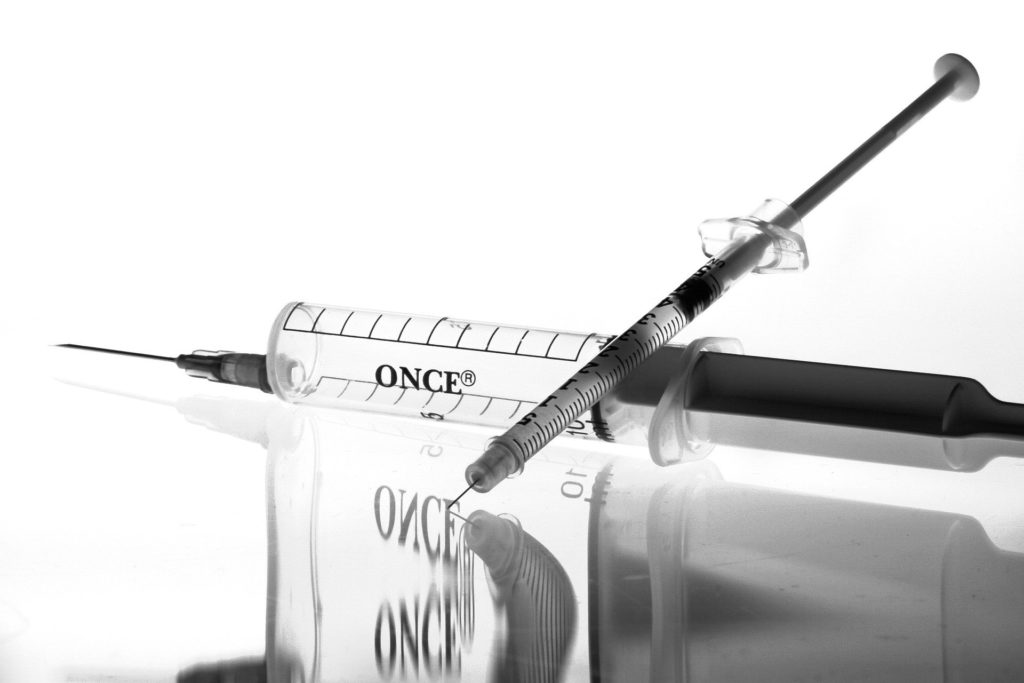Data from Eli Lilly and Company’s (NYSE: LLY) Phase III clinical trial evaluating its monoclonal antibody drugs bamlanivimab (LY-CoV555) and etesevimab (LY-CoV016) show that combining the two significantly reduced the risk of COVID-19 hospitalizations and death by 70 percent.
Eli Lilly announced yesterday that the drugs met the primary endpoint of the Phase III BLAZE-1 (Blocking Viral Attachment and Cell Entry with SARS-CoV-2 Neutralizing Antibodies) trial of reducing hospitalization and mortality, and also demonstrated statistically significant improvements on all key secondary endpoints including reduced viral load and more rapid resolution of symptoms.
The bamlanivimab and etesevimab combination treatment — both given at a dose of 2,800 mg — significantly reduced COVID-19-related “events,” which include hospitalizations and deaths in high-risk patients with a recent COVID-19 diagnosis.
Bamlanivimab and etesevimab together also demonstrated statistically significant improvements on all key secondary endpoints, providing strong evidence that the therapy reduced viral load and accelerated symptom resolution.
Bamlanivimab received emergency use authorization (EUA) from the US Food and Drug Administration (FDA) in November of last year for the treatment of COVID-19 in adults and children over the age of 12 years with mild to moderate disease, but who are at high risk for progressing to severe COVID-19 and becoming hospitalized, including individuals aged 65 and older and those with certain chronic medical conditions.
Related: Eli Lilly Scores Emergency Use Authorization for COVID-19 Antibody Drug
Across 1,035 patients evaluated in the Phase III BLAZE-1 trial, among patients that received the treatment, there were 11 events (2.1 percent) compared with 36 events (7.0 percent) in patients that got placebo. This translates to a risk reduction of 70 percent. No deaths occurred in patients who took bamlanivimab and etesevimab while there were ten deaths among patients that took the placebo.
“Notably, the 70 percent decrease in risk of hospitalizations or death seen in this Phase III trial of bamlanivimab and etesevimab together is consistent with the reduction in risk of hospitalization or ER visits seen with bamlanivimab alone in the Phase II trial. Bamlanivimab alone is authorized for emergency use as a treatment for high-risk patients with mild to moderate COVID-19 in the US and widely available for use,” said Daniel Skovronsky, MD, PhD, Lilly’s chief scientific officer and president of Lilly Research Laboratories, in a news release from the company.
Results of the study were published in the journal JAMA.
Bamlanivimab was developed in collaboration with Vancouver-based biotech company AbCellera which specializes in developing therapeutic antibodies through its AI-driven drug discovery platform. It binds to the receptor-binding domain (RBD) on the spike protein of SARS-CoV-2 to neutralize it.
Etesevimab is a recombinant neutralizing monoclonal antibody that also binds to the RBD on the spike protein. Lilly licensed Etesevimab from Junshi Biosciences after it was jointly developed by Junshi and the Institute of Microbiology, Chinese Academy of Science (IMCAS). While Junshi Biosciences continues to lead its development in Greater China, Lilly is leading development in the rest of the world.
Lilly has accumulated safety and efficacy data for more than 4,000 participants treated with either bamlanivimab alone or bamlanivimab and etesevimab together across multiple different clinical trials. The safety profile of the combination was consistent across the Phase I, II and III trials. Serious adverse events were reported at a similar frequency in both the bamlanivimab-etesevimab combination and placebo groups.
“These exciting results, which replicate positive Phase II data in a much larger set of patients, add valuable clinical evidence about the role neutralizing antibodies can play in fighting this pandemic. While the preliminary nature of Phase II results from COVID-19 neutralizing monoclonal antibodies may have limited acceptance of treatment, these Phase III data further strengthen the available evidence,” said Dr. Skovronsky.
Moreover, initial results from the ongoing BLAZE-4 trial — which is evaluating viral load and pharmacodynamic/pharmacokinetic data — show that lower doses of bamlanivimab (700 mg) and etesevimab (1,400 mg) together perform similarly to the 2,800 mg dose for each drug.
Lilly says it plans to examine even lower doses of each drug in the dual treatment as lower doses can expand available supplies to treat more patients, allow the potential for subcutaneous dosing and reduce infusion times to potentially reduce the burden on healthcare systems.
“The death toll from COVID-19 continues to rise around the world and hospitalizations, particularly in the US, have reached record highs. These data further support our belief that bamlanivimab and etesevimab together have the potential to be an important treatment that significantly reduces hospitalizations and death in high-risk COVID-19 patients,” Dr. Skovronsky said.
“Bamlanivimab alone is predicted to be effective against more than 99 percent of all strains that we see in the United States today,” Dr. Skovronsky said in a media call. “Bamlanivimab plus etesevimab should take care of the rest of them.”
He added that Lilly may also add a third or fourth antibody in the future to target any variants that escape the current two-drug combination.
Bamlanivimab is administered as a single dose intravenous injection. The bamlanivimab and etesevimab dual therapy is currently being evaluated by the FDA for the provision of EUA.












Join or login to leave a comment
JOIN LOGIN